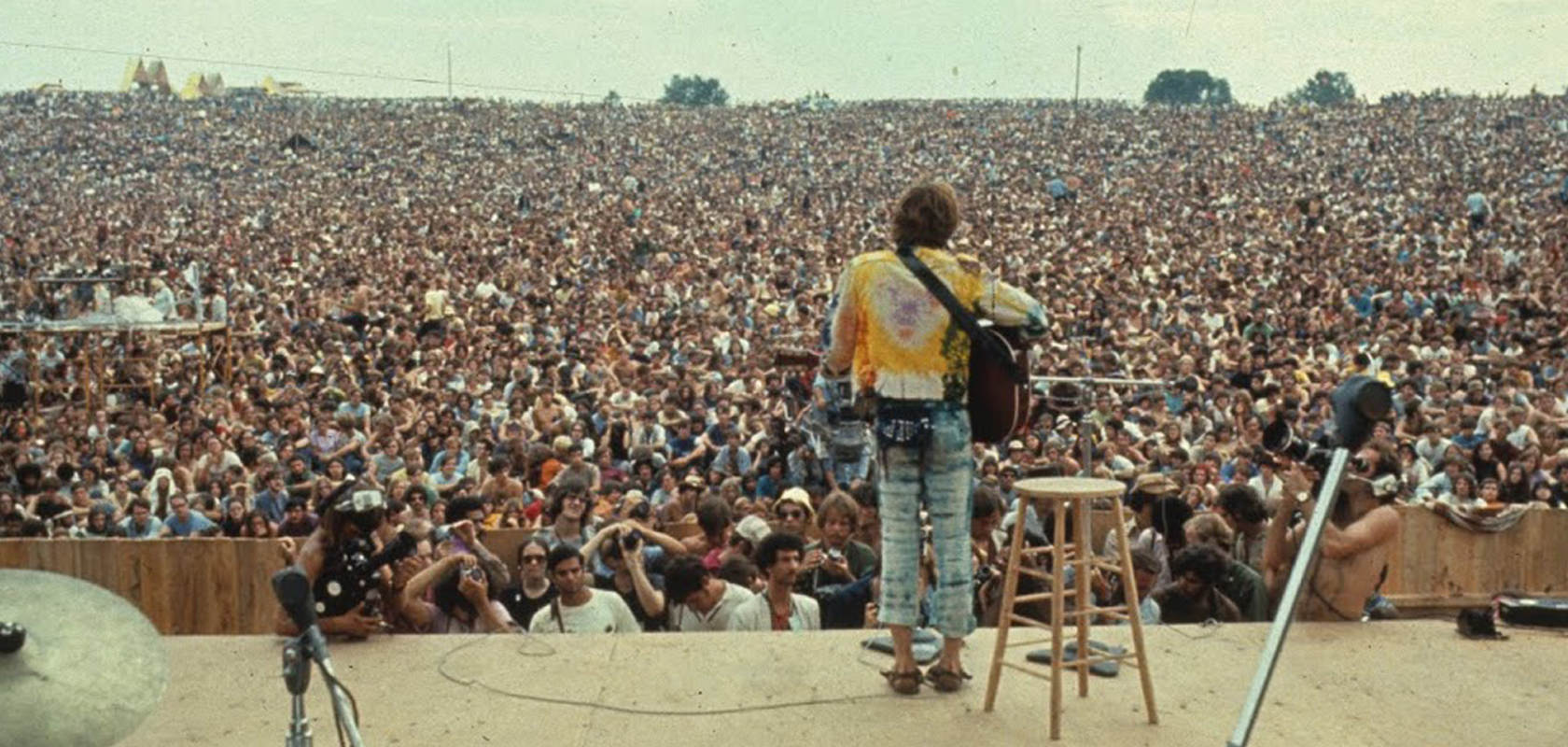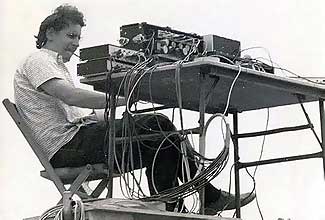Cultural Significance of Woodstock
Woodstock was never intended to be the mass political demonstration of counterculture that we remember it as today. It was pieced together in just a month and took place on a dairy farm in Bethel, New York with an expected 50,000 attendance. Actual attendance soared past these numbers with over 100,000 pre-sold tickets and an estimated million that attempted to attend the music festival. The reality of the festival was a lack of infrastructure and facilities, horrible weather, and standstill traffic for miles. People attribute the lack of violence between attendees to the heavy use of psychedelic drugs and the hipster mindset that Woodstock should be used to spread love, not hate (History.com). This counterculture in the 1960’s arose from the Anti-Vietnam movement happening alongside the era of the civil rights movement that generated a vast amount of political unrest.
Musical Significance of Woodstock
Woodstock was never intended to be the mass political demonstration of counterculture that we remember it as today. It was pieced together in just a month and took place on a dairy farm in Bethel, New York with an expected 50,000 attendance. Actual attendance soared past these numbers with over 100,000 pre-sold tickets and an estimated million that attempted to attend the music festival. The reality of the festival was a lack of infrastructure and facilities, horrible weather, and standstill traffic for miles. People attribute the lack of violence between attendees to the heavy use of psychedelic drugs and the hipster mindset that Woodstock should be used to spread love, not hate (History.com). This counterculture in the 1960’s arose from the Anti-Vietnam movement happening alongside the era of the civil rights movement that generated a vast amount of political unrest.
John Sebastian Performing at Woodstock

“John Sebastian at Woodstock.” Woodstock.com, https://www.woodstock.com/lineup/.
Sounds Systems Used at Woodstock
As “one of the most historic music and cultural events of the 20th century” (Pettersen, 2019), it was crucial that the entire audience could take in the various performers and artists. Taking place outside, it faced the same challenge as other festivals- how to obtain high-quality sound and disseminate this sound to crowds over large areas and screams. Until this point, outdoor concerts typically used PA systems available at the venue or small, portable sound systems that were not powerful enough to produce sound over the crowd.
It was not until Woodstock promoters found Bill Hanley, “‘a crazy guy in Boston who might want to take a shot at [Woodstock’s] sound system’” (Michael Lang, Pettersen, 2019). The system he created utilized mics on vocals, drums, percussion, guitar amps, and acoustic guitars, all of which were the Shure Unisphere Model 565. An article with Hanley in Front of House in February 2019 describes first-hand that “We used about 20 Shure Unidyne microphones…I also used four modified Shure M67’s…two Shure M63 Audio Masters” (Hanley, Pettersen, 2019). Although Shure was a prominent force on the Woodstock stage and the only microphone featured in both photos and a documentary, there is still a chance that other microphones were used. We can only assume that Shure was the dominating force in this revolutionary sound system.
Bill Hanley at Woodstock 1969 Using His Shure-Dominant Sound System

It Was Only 40 Years Ago, MIX, 1 Oct. 2009, https://www.mixonline.com/live-sound/it-was-only-40-years-ago-368168.
Shure at Woodstock
Bill Hanley’s system at Woodstock penetrated a crowd of over 400,000 people, making audio history. His system has been described to have “indirectly affected generations of fans, many of whom were born long after the actual event…Every time since, when we hear Richie Havens’ words ‘Freedom! Freedom!’ echoing over Yasgur’s field, we have Hanley to thank” (Kane, 2019). From the performance of Woodstock in 1969, Shure has made itself a dominant force in the music industry. If not for their prominence on the Woodstock stage, we may not have the same memory of performances, such as Jimi Hendrix’s controversial “Star Spangled Banner”. The capability of Shure microphones to project sound clearly is what allowed people to enjoy and, more importantly, remember this performance. Since Hendrix performed on the last day of Woodstock after the crowd had thinned, the leftover audience’s ability to hear the song is even more important, as it was up to them to share about the experience to the masses. Should another microphone had been used, the distinct sounds of bombing and screaming that marked Hendrix’s controversial commentary of American war would have been lost, thus resulting in his performance holding much less significance in our nation. Shure’s ability coupled with Hanley’s expertise helped to define Woodstock’s performances and success of its artists.
Jimi Hendrix – Star Spangled Banner Woodstock 1969
Jtrain9012, director. Star Spangled Banner. YouTube, YouTube, 22 Mar. 2012, www.youtube.com/watch?v=rUpI9MeLZkQ. Accessed 13 Apr. 2022.